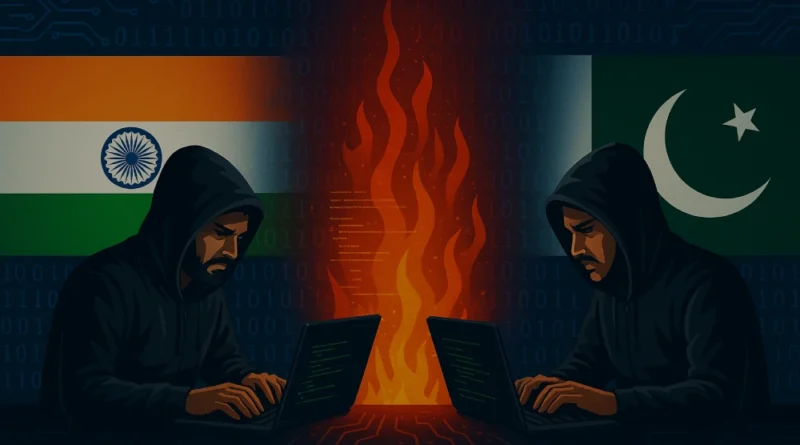India-Pakistan Cyber Conflict Escalates: How to Protect Yourself Online
As tension increases rapidly in cyberspace, people have been alerted to the new threat of geopolitical turmoil. The people in Pakistan initiated an attack on the system of India designed for the purpose of getting into Indian citizens, businesses, and the critical sectors of the Indian banking and financial services. These assaults specifically cover the methods of email, WhatsApp, Telegram, Facebook, the use of phishing, viruses, and the act of getting unauthorized data.
In the wake of the increasing problem of cyber attacks, CERT-In, the Indian national organization for cyber security, issued a nationwide warning, and the Bombay Stock Exchange (BSE) was quick to alert its members to the danger and to step up their defense mechanisms. The banks of India are also active in their efforts as they have pulled all stops to update their digital infrastructure and at the same time have localized the sensitive locations.
Such a move has seen a revolution in technology as hackers in Pakistan are developing into the new trend of launching cyberattacks on India. The Hillary Dance is a dangerous code that has gone viral, disguised as a video, or a document. In another incident, there was an attack on an Indian defense portal that made a concrete digital strategy.
When the instances are to the extent cyber activity is at its peak, taking precautions of the following five cybersecurity practices is essential:
- Use Strong Passwords Generate complex passwords that include, among other things, both upper and lower case letters, numbers, and signs. Avoid using the same password for different accounts. Password managers are a useful solution for keeping, organizing, and generating strong passwords.
- Enable Two-Factor Authentication (2FA) Provide more protection for your accounts. If by any chance, someone steals your password, they will still not be able to enter your accounts without a security code sent to your phone or email.
- Keep Devices and Software Updated Do not forget to update your operating system, applications, and antivirus programs regularly. Many times, those who program updates fix vulnerabilities that can be exploited by cybercriminals.
- Avoid Suspicious Links and Downloads When in doubt always stay away from unknown messages and emails, especially those who send links or files as there might be some kind of fishing behind. Phishing is identified as one of the principal exposures to hackers breaking into systems.
- Backup Important Data Go for cloud storage or an external drive to make a copy of your vital files. By means of this, it would be left to the field from data loss if you were under a cyberattack or system crash, etc.
Currently, when cyber warfare is part of the typically modern conflict, people’s awareness and the implementation of strong security habits have shifted from being an option to a must.
Disclaimer
The information presented in this blog is derived from publicly available sources for general use, including any cited references. While we strive to mention credible sources whenever possible, Web Techneeq – web design company in Mumbai
does not guarantee the accuracy of the information provided in any way. This article is intended solely for general informational purposes. It should be understood that it does not constitute legal advice and does not aim to serve as such. If any individual(s) make decisions based on the information in this article without verifying the facts, we explicitly reject any liability that may arise as a result. We recommend that readers seek separate guidance regarding any specific information provided here.

